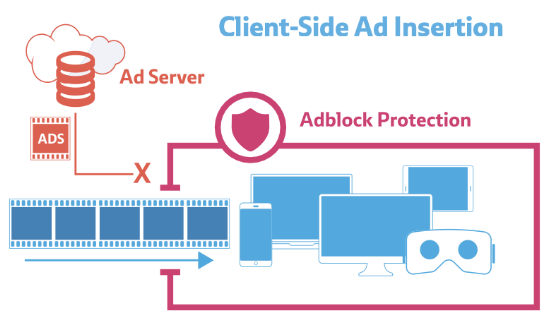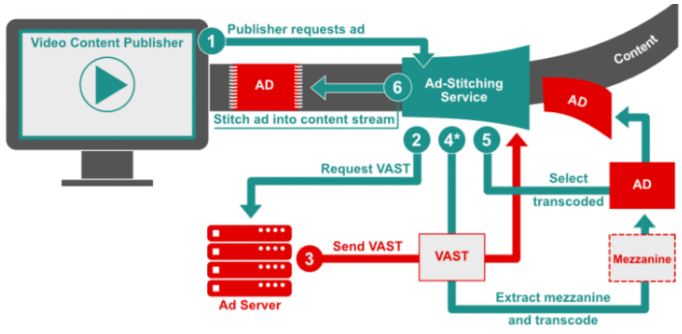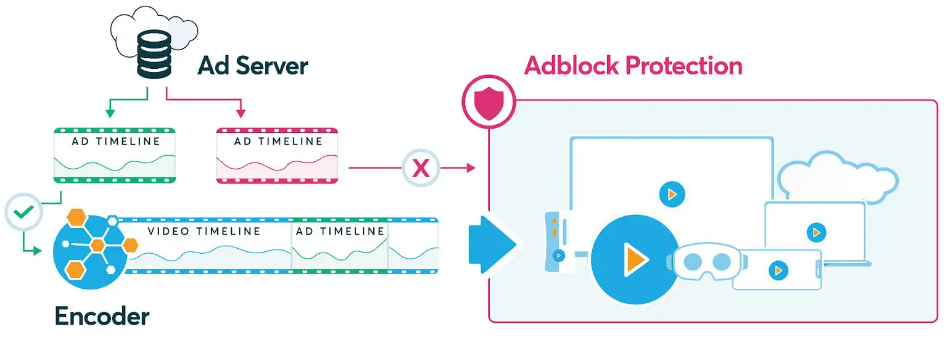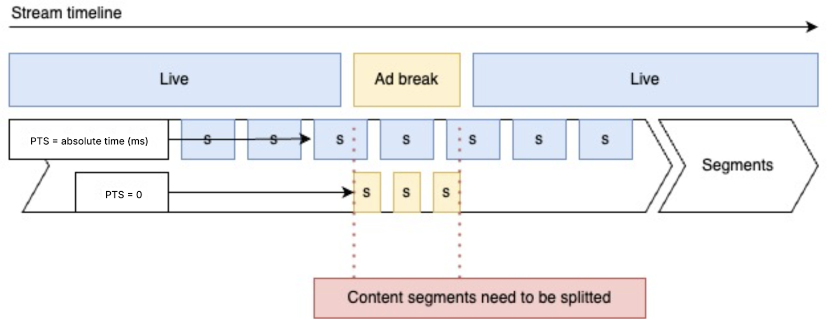What is CSAI (Client-Side Ad Insertion) ?
In a CSAI flow, advertisements are managed and added to the end-user’s device. From a delivery point-of-view, content and ads are separated; the player plays content and advertisements independently of each other. The player will switch between the two as needed. Client-Side Ad insertion is specified via the IAB (Interactive Advertising Bureau) standards:
- VAST (ad metadata)
- VMAP (ad timing)
- VPAID/SIMID (interactive ads) and
- OMID (view-ability measurements)
A compliant player supports all ad solutions that adhere to these standards, making it easier to switch to another provider.
CSAI systems with a different flow can then be added on an individual basis. Alternative implementations, for instance, Google IMA, can also be added in parallel.
Reference: https://ottverse.com/csai-vs-ssai-client-side-server-side-ad-insertion/
Reference: https://bitmovin.com/csai-vs-ssai-client-side-server-side-ad-insertion/
What is SSAI (Server-Side Ad Insertion) ?
In an SSAI flow, advertisements are directly stitched to the streaming manifest on the server side at the last moment. The content and advertisements are closely related to each other, allowing smoother playback and transitions. This way of working is comparable to traditional linear television. The main difference between broadcast advertising and SSAI is that the latter allows advertisements to be targeted towards individual end-users.
Server-side ad insertion is only partly standardized. SCTE-35 markers are a popular technique to signal the encoder and packager where ads are allowed to be inserted. It was, however, never intended to be used for streaming clients. As a result, SCTE-35 is often only used to inform SSAI providers where ads should be placed. How they place those ads and how they provide the relevant metadata for tracking ad progress is not standardized. This metadata is needed to build a CSAI-like experience: showing a click-through, giving an indication about duration, and current time. Some common strategies include:
- Fetching metadata from the SSAI provider’s backend
- Adding timed cues via ID3/EMSG
- Parsing custom tags from the streaming manifest
- Integrating with a proprietary library
A video player pre-integrated with multiple SSAI vendors improves the interoperability between all of them.
Reference: https://ottverse.com/csai-vs-ssai-client-side-server-side-ad-insertion/
Reference: https://bitmovin.com/csai-vs-ssai-client-side-server-side-ad-insertion/
Reference: https://ottverse.com/csai-vs-ssai-client-side-server-side-ad-insertion/
Conclusion
Generally speaking, in conclusion, SSAI may be more expensive than CSAI, but it also results in much more ad impressions. Ad blockers may be less effective against this type of advertising.
- This is due to the tighter integration between content and advertisements and the increased complexity overall. These additional costs have to be subtracted from the Cost Per Mille (CPM) pay-out. The higher cost of SSAI, however, can be easily countered by the fact that it provides a much higher fill rate.






